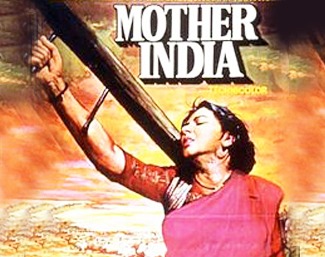The allegation against the concept of Nationalism these days is that it forces a woman into lifetime confinement of traditionalism by propagating the image of “ Mother India ” which nullifies her importance as an individual and introduces her as a slave of patriarchy. If those conservative Indian notions that thwart a woman’s progress and curb her freedom need to be dismissed, we also need to question the veracity of a consideration that the figure of a traditional Indian woman embodied in the renowned emblem of “ Mother India ” essentially curtails her freedom. In fact, we need to question ourselves whether or not our own myopic thinking that fails to go beyond fixed notions has resulted into such a limited understanding.
Is it wrong to stand forth as an obedient daughter that respects her parents, a faithful wife devoted towards one’s family responsibilities as a daughter-in-law and above all a mother? Why do we assume that traits like obedience and loyalty are marks of subservience to patriarchy? If so, then are we not conventional in outlook as the ones that stereotype women into fixed categories as docile or submissive?
It is important for the so-called proponents of Modernism to realize that an Indian woman draped in a sari wearing a bindi on her forehead engrossed in her household chores and most diligently satiating her family demands does not necessarily become the paradigm of “traditionalism”. In fact, she is an epitome of a culture and tradition that has promoted the renowned icon like Sita who is not simply a model of disseminating orthodox rules for a woman in the society as wrongly interpreted by orthodoxy. Let us not forget that Sita was able to promptly lift Shiva’s heavy bow which required nearly thousands of servants to drag it and which many accomplished warriors could not even move! Sita testified the prowess of a woman in demolishing the onslaught of conformity which makes the biggest error of misunderstanding her as the weaker sex. Although Rama killed Ravana, it is a fact not unknown that abducting Sita was the biggest mistake that the demon made which brought him to his death end. Sita’s decision to immerse herself in the earth towards the end of Ramayana was not her resignation to her fate but instead seems a strong rebuttal of patriarchy that assumes it can accept or reject a woman as per its own will. Moreover, in Vilanka Ramayana or Adbhuta Ramayana, we do see Sita transforming herself as Kali and destroying a demon which attests her power in front of Rama. Deities like Kali and Durga as is always recognized are epitomes of the indomitable strength in a woman that is able to annihilate evil which undermines feminine identity. The deities are indeed intimidating figures but they are, it cannot be denied, worshiped as the incarnations of the holy mother Parvati; the consort of Shiva. This paradox is the cynosure of Indian tradition which goads the sentiment that an Indian woman’s dual persona of a protector and a destroyer is her colossal identity of “Mother India” which cannot and should not be made fun of as an insignia of her weakness, her submissive image as someone imprisoned in her domicile subservient to the male dominated world. India has powerful Mothers like Rani Laxmibai of Jhansi that fought bravely against the British instead of meekly resigning in front of them. Indian women have proudly established their intrepidity when they have sacrificed their lives to preserve their integrity from time to time. When the Ranis of Rajasthan jumped into fire to save themselves from the Muslim invaders instead of sacrificing their honor, it validates their act of “Sati”. In fact, the conception of Sati in the Indian tradition needs to be comprehended independent of its conservative meanings imparted to it by the experts who claim to be the delegates of tradition. Sati also refers to the devoted wife like Savitri who could bring back her husband from the clutches of death just because of her loyalty towards him. When we speak of a faithful Indian wife, we need to realize that it does not always bear the connotation of a subordinate who is forced into marriage and reluctantly keeps adhering to her obligations. Such a stringent belief not only reflects ignorance but also exposes today’s fanatic obsession for the “Modernity” that has almost excluded tradition from its vicinity.
Just adopting a foreign culture does not make a woman ““Modern” is a fact that we all sensible individuals agree. Why then do we expect “Indianness” of an Indian woman to be clad under the apparel of an identity imported from somewhere else? Why don’t we have the courage to represent Indian culture through our “ Mother India ” and not misrepresent her as the perpetual victim? Do we not have examples of the Indian mothers who are the most successful career women of the world today and who have proved their worth without abnegating their values? It is not a debatable issue that we need Indian women to be free from the overbearing patriarchy that has ignored her existence to the extent of making her identity oblivious. Nonetheless, let us ask ourselves what great service are we doing to the humanity by deriding the image of “ Mother India ”? Is it boosting modernity in the real sense as it should or is it simply fulfilling the aim of orthodoxy indirectly by negating the identity of an Indian woman? Should we Indians project “ Mother India ” as an oppressed or as a Fighter?

















